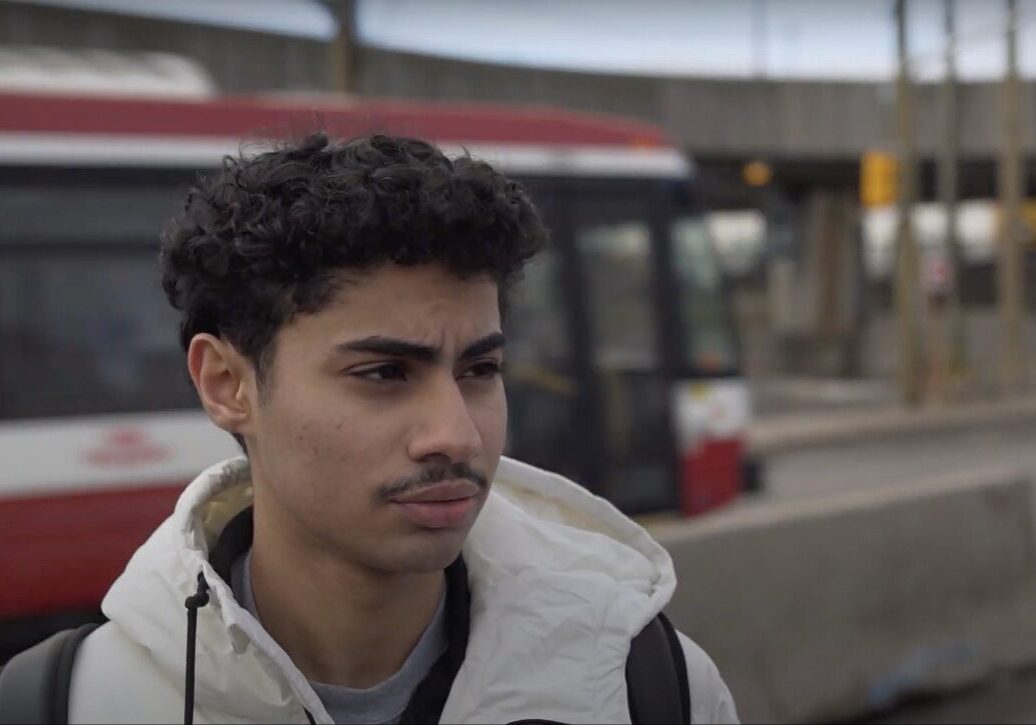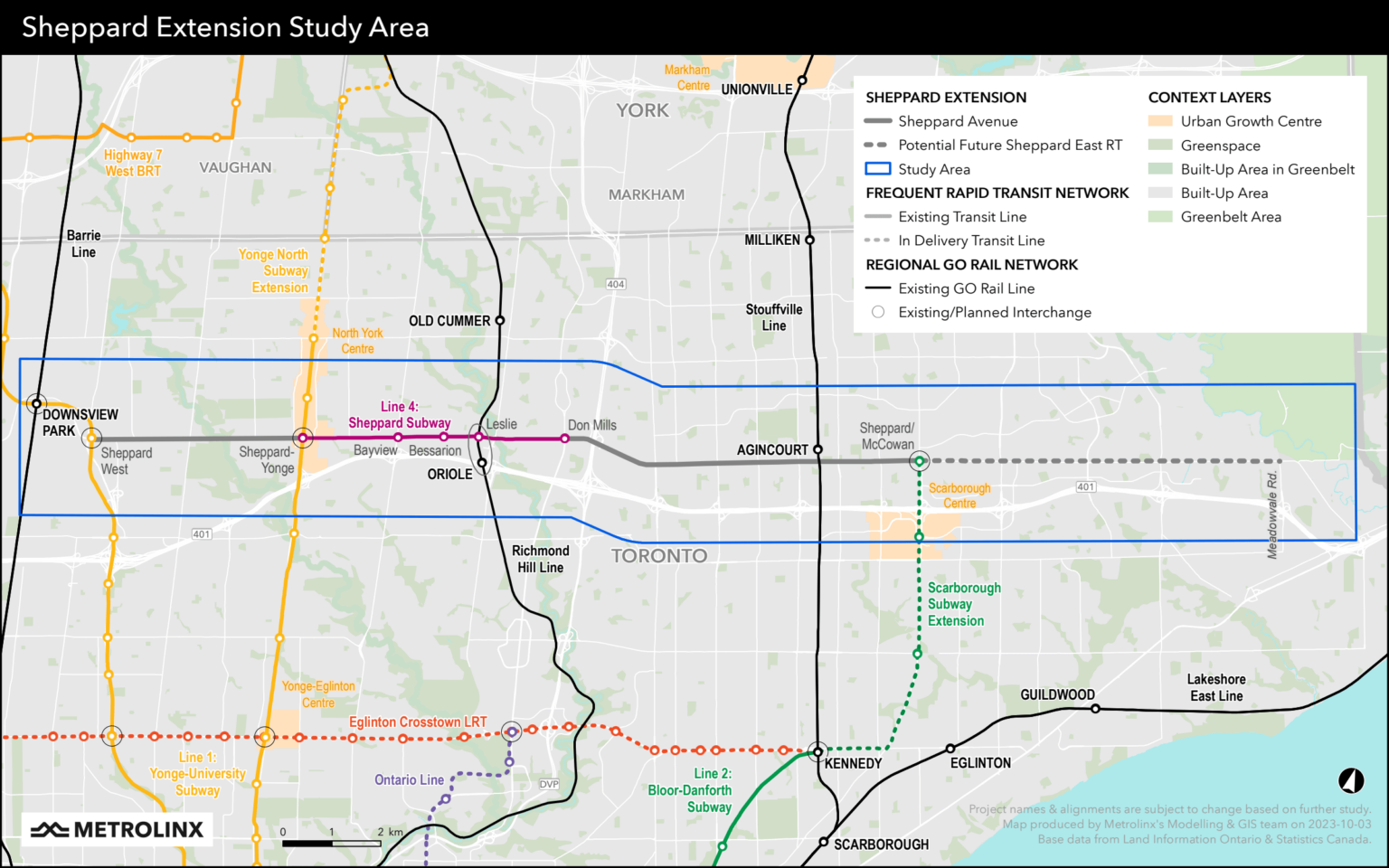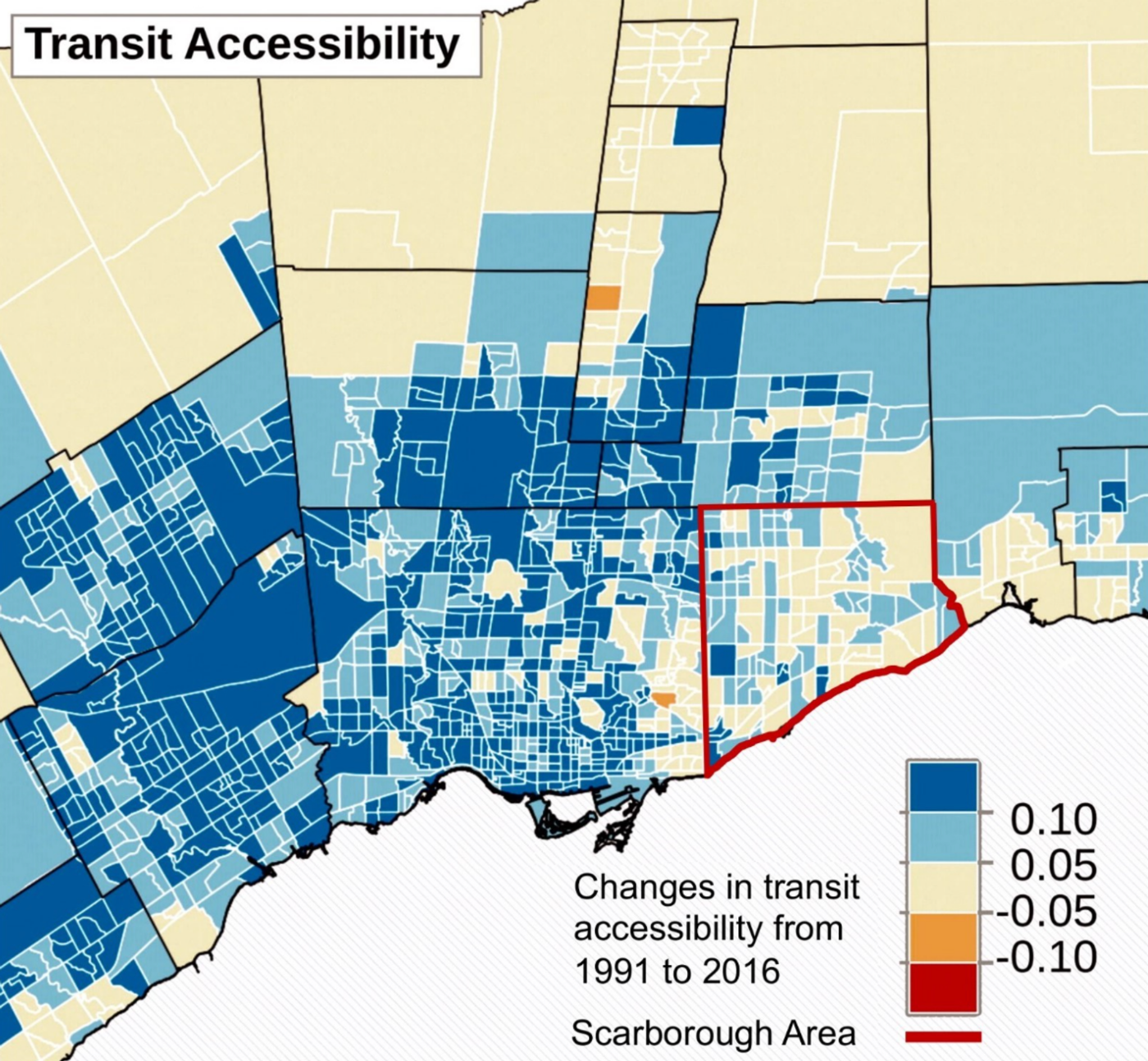THE GREEN LINE
VIDEO STORY
Scarborough transit Access: 'No, it’s not equal. definitely not equal'
A Green Line data analysis shows that the more racialized a Toronto ward is, the fewer subway stops that ward has on average.

Residents in Scarborough told us that they feel their commute times are far too long, and that other parts of the city have better transit access.


James Westman
Humber journalism graduate. Existential threat observer. Explored every park and trail in Toronto, with a map to prove it. Believes the Leslie Street Spit is the city's best hidden gem.
June 25, 2024
Does this graph look equal to you?
METHODOLOGY: IN ORDER TO AVOID SKEWING THE TOTAL NUMBER OF SUBWAY STOPS AND AVOID DOUBLE-COUNTING SUBWAY STOPS THAT BORDER ON TWO WARDS, THESE SUBWAY STOPS WERE COUNTED AS HALF FOR EACH CITY SECTION.

Even the TTC board chair Jamaal Myers agrees: Scarborough needs better transit. Torontonians are not impacted by lack of transit access equally; on average, the more racialized a Toronto ward is, the fewer subway stops that ward has.
Scarborough is the most racialized part of Toronto, with 77 per cent of the population identifying as “visible minorities,” according to the 2021 census.
University-Rosedale, in the middle of the city, has the most subway stops and a racialized population percentage of 37.5 per cent.
Meanwhile, Scarborough North, along with Scarborough-Agincourt, Scarborough-Rouge Park, Scarborough-Guildwood, York South-Weston, Don Valley East, Etobicoke North and Etobicoke Centre each have zero subway stops. These eight wards have an average racialized population percentage of 70 per cent, which is 14 per cent above the racialized population percentage of Toronto.
As both city councillor for Scarborough North and TTC Board chair, Myers is responsible for transit access in his ward, though the vast majority of decisions about where to build subways and LRT systems predate his 2022 election to city council and selection as TTC Board chair last August.
METHODOLOGY: IN ORDER TO AVOID SKEWING THE TOTAL NUMBER OF SUBWAY STOPS AND AVOID DOUBLE-COUNTING SUBWAY STOPS THAT BORDER ON TWO WARDS, these SUBWAY STOPS WERE COUNTED AS HALF FOR EACH WARD.
📸: JAMES WESTMAN/THE GREEN LINE
“I suspect if you ask me this [when Scarborough will have more transit access] in 10 years, Scarborough North will at least have one subway stop,” says Myers. “A significant portion of the Eglinton East LRT will go through Scarborough North. It will be looping to connect with Sheppard and McCowan. It will also be going up north with a terminus at Malvern Town Centre.”
“So, that would be a significant boost in the number of transit stops in Scarborough.”
Shelagh Pizey-Allen, spokesperson for transit advocacy group TTC Riders, says Toronto has provided $1.2 billion for the Eglinton East LRT, but that the federal and provincial governments have yet to fund the project.

MAP OF THE PROPOSED ROUTE FOR THE SHEPPARD SUBWAY EXTENSION. THE ONTARIO GOVERNMENT CANNOT CONFIRM WHETHER THEY WILL FUND AND BUILD IT. 
Another major project that would add transit stops in Scarborough is the proposed Sheppard subway extension that would expand Line 4 west from Yonge Street and Sheppard Avenue West to Downsview Park. The line would also expand east from Don Mills to Sheppard Avenue and McCowan Road, connecting with the northernmost stop of the Scarborough subway extension that will replace the decommissioned Line 3.
The Green Line asked the Ontario transportation ministry if it’s committed to funding the Sheppard subway extension and if it would be joining the City of Toronto in funding the Eglinton East LRT. In response, the ministry says Metrolinx is evaluating options for the Sheppard extension route, and that construction timelines would be established once their “initial business case” has been completed. The ministry did not confirm, however, whether it is committed to funding the Sheppard extension route or the Eglinton East LRT.
To better understand the impact of poor transit access, The Green Line spoke to Ignacio Tiznado-Aitken, a postdoctoral fellow at the Department of Human Geography at University of Toronto Scarborough.
“I think that one of the reasons why you see that big difference is the Canadian housing crisis. Toronto has very high rents and it's very difficult to live downtown and [find] affordable prices,” he explains. “A lot of newcomers, like recent immigrants and racialized population groups, are [located] in Scarborough, just trying to find a place that is a bit more affordable in the city,” he says.
Tiznado-Aitken showed us a map, below, that documents how transit accessibility in Toronto — defined as how easy it is to access daily opportunities using public transportation services — has changed over 25 years, from 1991 to 2016.
In the map legend, blue shows an increase in transit accessibility, whereas orange and red indicate a decrease in accessibility over time. Scarborough is highlighted in red, which means there have been no major changes in transit access there in a quarter century.

TRANSIT ACCESSIBILITY IN SCARBOROUGH STAGNATED FOR 25 YEARS, WHILE MOST OTHER AREAS IN THE GREATER TORONTO AREA SAW IMPROVEMENTS OVER TIME.

Since the early closure of Line 3 Scarborough (otherwise known as the RT) last July, Scarborough transit riders have only had access to buses to connect with the subway system at Kennedy station. In order to ease the wait for the Scarborough subway extension’s opening, city council voted to build a dedicated busway where the RT used to run that would reduce transit time by seven minutes each way between Kennedy station and Scarborough Centre station.
“Due to the previous council's unwillingness to fund it and mistakes by the TTC (an environmental assessment was not completed when it should have been, costing precious time), the busway is years behind,” Pizey-Allen said in an email.
The busway may not be complete by its scheduled completion date of 2027, according to Myers. “The current official estimated completion date is late 2026, mid-2027. However, that is an estimate based on 60 per cent design. Once I get to 100 per cent design, that timeline might change,” he explains.
One issue Myers flags as a potential obstacle to the busway opening on time is land acquisition. Because some of the land is owned by condos, he says real estate law dictates that you have to get a “very high threshold” of condo owners to agree to sell the land. That's 66 to 80 per cent, depending on the circumstances, Gardiner Miller Arnold LLP told The Green Line in an email.
“I think what we really saw in the pandemic was: Scarborough is in a lot of ways the backbone of Toronto. When you have a population, mostly racialized, mostly working class that can't get to where they’re going, it holds everything back,” Myers adds.
Fact-Check Yourself
Sources and
further reading
Don't take our word for it —
check our sources for yourself.
